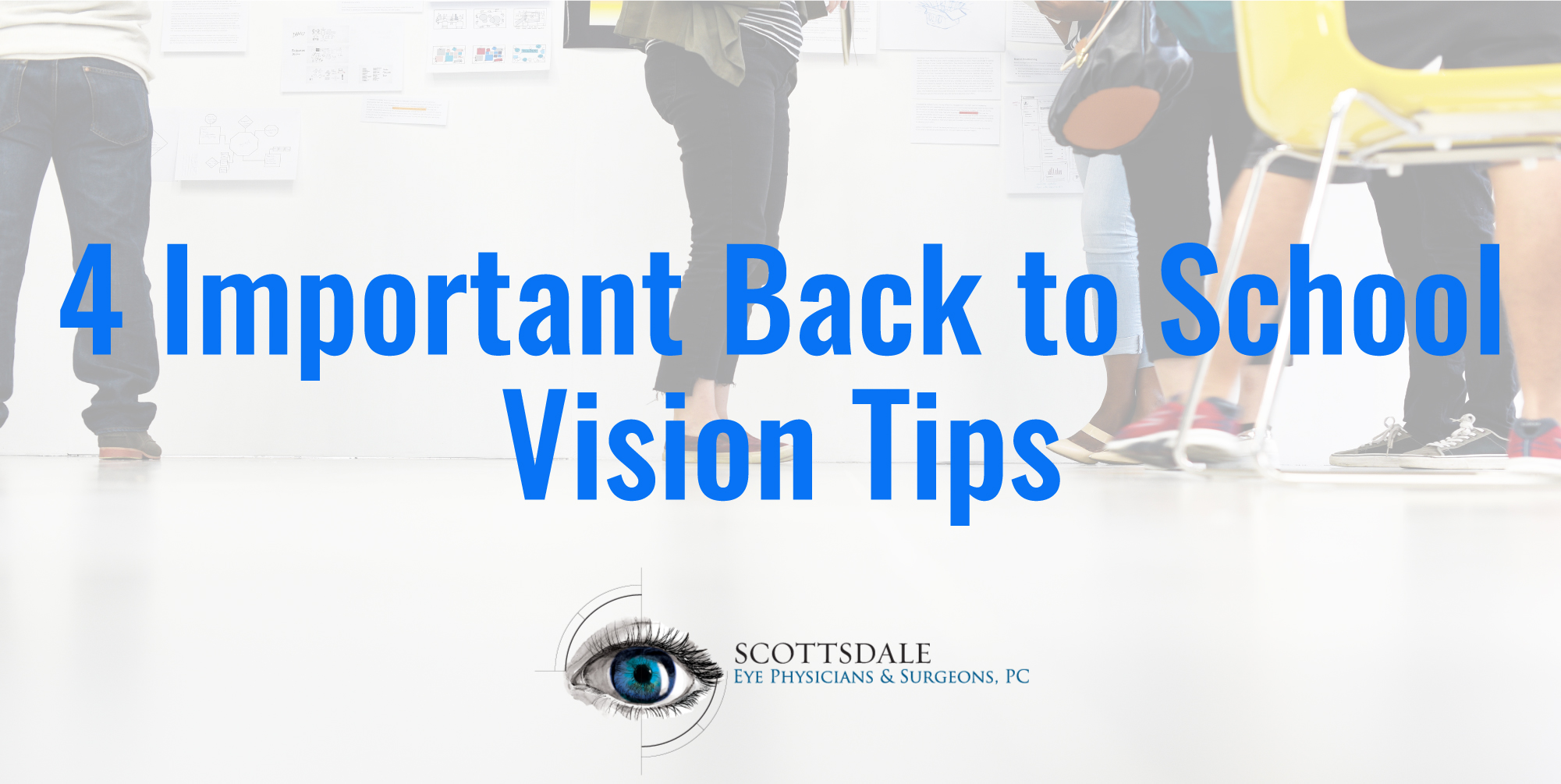4 Important Back to School Vision Tips
Back to school time is here, and the scramble to get everything done has begun. But have you remembered to make an appointment for your child’s eye exam? Don’t worry you are not alone and we are here to help!
Ophthalmologists remind busy parents during back to school season not to neglect one of the most important learning tools: their children’s eyes!! Good vision and overall eye health are vital to learning!
Scottsdale Eye Physicians and Surgeons joins the American Academy of Ophthalmology in emphasizing how important healthy vision is to academic success during Children’s Eye Health and Safety Month this August.
Because children are still growing, staying on top of eye health is really important. The earlier that vision problems are diagnosed, the sooner they can be addressed.
For children to maintain healthy eyes and vision throughout the school year we recommend the following four tips:
-
Get regular childhood vision screenings

Children’s eyes change rapidly, making regular vision screenings an the first and most important step in detecting and correcting eye problems early. In addition to screenings for infants, the Academy recommends further vision screening for children when they are:
When to schedule childhood eye exams
- Pre-school age, between age 3 and 3 1/2
- Entering school
- Experiencing a possible vision problem
For school-age children, a vision screening is a quick less comprehensive exam than a dilated eye exam. Your pediatrician can perform a vision screening during regular checkups! Back to school is the perfect time to schedule your vision screening.
If any issues arise during the screening process an appointment with an optometrist or ophthalmologist is needed.
-
Do you know your family eye health history?

Knowing your family history and sharing any eye diseases or conditions is extremely important in protecting your vision.
Examples of common eye conditions include nearsightedness, crossed eye, known as strabismus, and lazy eye, known as amblyopia. If these are not treated in childhood, they can cause permanent vision loss in one eye.
-
Watch for signals of eye problems

The below are some common eye symptoms that could indicate a problem
- Complaints of eyestrain
- Headaches
- Squinting when reading or performing other common activities
- White or grayish-white coloring in the pupil
- One eye that turns in or out
- Eyes that do not track in sync together
-
Don’t forget protective eyewear when playing sports

Eye injuries while playing sports can cause serious damage, whether by getting smacked with an elbow during basketball or hit with a hockey stick.
If your child plays racket sports, hockey, field hockey, baseball or basketball, consider having them wear goggles or other certified protective eyewear.
Visit the Academy’s website to learn more about common childhood eye conditions.
Conclusion
As a rule of thumb parents should play close attention to the above 4 tips to ensure that their child’s vision is in tiptop shape for starting school. Your child sight is essential for their education and success, don’t wait to get their eye’s checked! Call our office today at 480 994 1872 or click here to book

